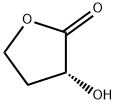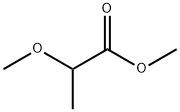(+)-DIACETYL-L-TARTARIC ANHYDRIDE
Synonym(s):(+)-Diacetyl-L -tartaric anhydride
- CAS NO.:6283-74-5
- Empirical Formula: C8H8O7
- Molecular Weight: 216.14
- MDL number: MFCD00037918
- EINECS: 228-502-7
- SAFETY DATA SHEET (SDS)
- Update Date: 2025-01-27 09:38:02

What is (+)-DIACETYL-L-TARTARIC ANHYDRIDE?
Chemical properties
White Crystalline Solid
The Uses of (+)-DIACETYL-L-TARTARIC ANHYDRIDE
Di-O-acetyl-L-tartaric Anhydride (cas# 6283-74-5) is a compound useful in organic synthesis.
The Uses of (+)-DIACETYL-L-TARTARIC ANHYDRIDE
(+)-O,O′-Diacetyl-L-tartaric anhydride may be used as a chiral derivatizating agent in the following:
- determination of enantiomeric vigabatrin in mouse serum samples using ultra-high performance liquid chromatography-quadrupole-time-of-flight mass spectrometry (UHPLC-Q-TOF-M)????????
- determination of trantinterol in rat plasma by ultra performance liquid chromatography–electrospray ionization mass spectrometry (UPLC–MS/MS)
What are the applications of Application
(+)-O,O′-Diacetyl-L-tartaric anhydride is a chiral building block for proteomics research
General Description
(+)-O,O′-Diacetyl-L-tartaric anhydride is an HPLC derivatization reagent for UV/Vis detection. It is mainly employed as a reagent for the chiral derivatization of amino alcohols. It also reacts with alkanoamines in aprotic medium containing trichloroacetic acid and produces tartaric acid monoesters.
Purification Methods
If the IR is good, i.e. no OH bands, then keep it in a vacuum desiccator overnight (over P2O5/paraffin) before use. If OH bands are present then reflux 4g in Ac2O (12.6mL) containing a few drops of conc H2SO4 for 10minutes (use a relatively large flask), pour onto ice, collect the crystals, wash with dry *C6H6 (2 x 2mL), stir with 17mL of cold Et2O, filter and dry in it a vacuum desiccator as above, or store it in dark evacuated ampoules under N2 in small aliquots. It is not very stable in air, the melting point of the crystals drop one degree in the first four days then remains constant (132-134o). If placed in a stoppered bottle, it becomes gummy and the m falls 100o in three days. Recrystllisation leads to decomposition. If good quality anhydride is required it, should be prepared freshly from tartaric acid. It sublimes in a CO2 atmosphere. [Shriner & Furrow Org Synth Coll Vol IV 242 1963, Bell Aust J Chem 34 671 1981, Beilstein 18 III/IV 2296.]
Properties of (+)-DIACETYL-L-TARTARIC ANHYDRIDE
| Melting point: | 130-135 °C(lit.) |
| Boiling point: | 316.55°C (rough estimate) |
| Density | 1.5197 (rough estimate) |
| refractive index | 90 ° (C=0.5, CHCl3) |
| storage temp. | 2-8°C |
| solubility | Acetone, Chloroform (Slightly, Heated) |
| form | Crystals or Needles |
| color | White |
| optical activity | [α]20/D +59°, c = 6 in acetone |
| Water Solubility | Soluble in methanol and dichloromethane. Slightly soluble in water. |
| Sensitive | Moisture Sensitive |
| BRN | 87315 |
| CAS DataBase Reference | 6283-74-5(CAS DataBase Reference) |
Safety information for (+)-DIACETYL-L-TARTARIC ANHYDRIDE
| Signal word | Warning |
| Pictogram(s) |
 Exclamation Mark Irritant GHS07 |
| GHS Hazard Statements |
H315:Skin corrosion/irritation H319:Serious eye damage/eye irritation H335:Specific target organ toxicity, single exposure;Respiratory tract irritation |
| Precautionary Statement Codes |
P261:Avoid breathing dust/fume/gas/mist/vapours/spray. P264:Wash hands thoroughly after handling. P264:Wash skin thouroughly after handling. P280:Wear protective gloves/protective clothing/eye protection/face protection. P304+P340:IF INHALED: Remove victim to fresh air and Keep at rest in a position comfortable for breathing. P305+P351+P338:IF IN EYES: Rinse cautiously with water for several minutes. Remove contact lenses, if present and easy to do. Continuerinsing. P405:Store locked up. |
Computed Descriptors for (+)-DIACETYL-L-TARTARIC ANHYDRIDE
New Products
Indole Methyl Resin tert-butyl 9-methoxy-3-azaspiro[5.5]undecane-3-carboxylate Boc-His(Boc)-OH 2-CTC Resin 4-Chloro-7-tosy1-7Hpyrrolo[2,3-d]pyrimidine 5,7-Dibromo-1H-indole 2,5-dichloro-N-hydroxy-4,6-dimethylpyridine-3-carboximidamide 2,2-Dimethoxy-7-azaspiro[3.5]nonane hydrochloride 4-chloromethyl-5-methyl-1,3-dioxol-2-one (DMDO-Cl) R-2-BENZYLOXY PROPIONIC ACID 1,1’-CARBONYLDIIMIDAZOLE 1,1’-CARBONYLDI (1,2-4 TRIAZOLE) N-METHYL INDAZOLE-3-CARBOXYLIC ACID 4-((2-hydroxyethyl)thio)benzoic acid 1-(TERT-BUTOXYCARBONYL)-2-PYRROLIDINONE Methyl 6-methylnicotinate 3-Pyridineacrylic acid tert-Butyl carbazate TETRAHYDRO-2H-PYRAN-3-OL 2-((4-morpholinophenylamino) (methylthio) methylene) malononitrile 3-(4-morpholinophenylamino)-5-amino-1H-pyrazole-4-carbonitrile 2,4-dihydroxybenzaldehyde 1,3-Diethyl-1,3-Diphenylurea Methyl 2-methylquinoline-6-carboxylateRelated products of tetrahydrofuran








You may like
-
 (+)-Diacetyl-L-tartaric Anhydride CAS 6283-74-5View Details
(+)-Diacetyl-L-tartaric Anhydride CAS 6283-74-5View Details
6283-74-5 -
 (+)-O,O′-Diacetyl-L-tartaric anhydride CAS 6283-74-5View Details
(+)-O,O′-Diacetyl-L-tartaric anhydride CAS 6283-74-5View Details
6283-74-5 -
 Pyridine 99.5% HPLC /UV SpectroscopyView Details
Pyridine 99.5% HPLC /UV SpectroscopyView Details
110-86-1 -
 Piperazine Spot supply, best priceView Details
Piperazine Spot supply, best priceView Details
110-85-0 -
 Dibutyl PhthalateView Details
Dibutyl PhthalateView Details
84-74-2 -
 Imidazole Spot supply, competitive priceView Details
Imidazole Spot supply, competitive priceView Details
288-32-4 -
 Octadecyl 3-(3,5-di-tert-butyl-4-hydroxyphenyl)propionate 98% (GC)View Details
Octadecyl 3-(3,5-di-tert-butyl-4-hydroxyphenyl)propionate 98% (GC)View Details
2082-79-3 -
 Thiourea 99% ARView Details
Thiourea 99% ARView Details
62-56-6
